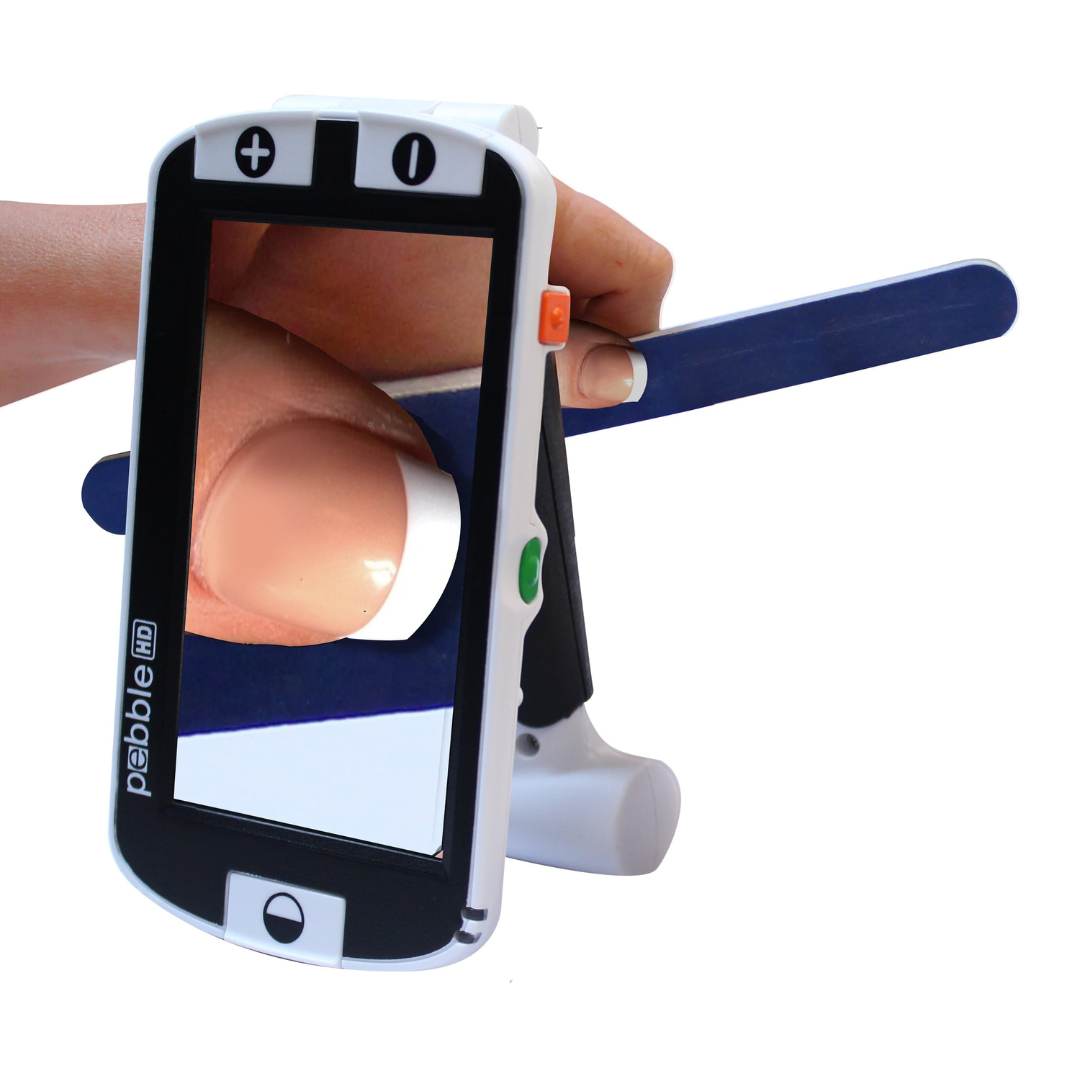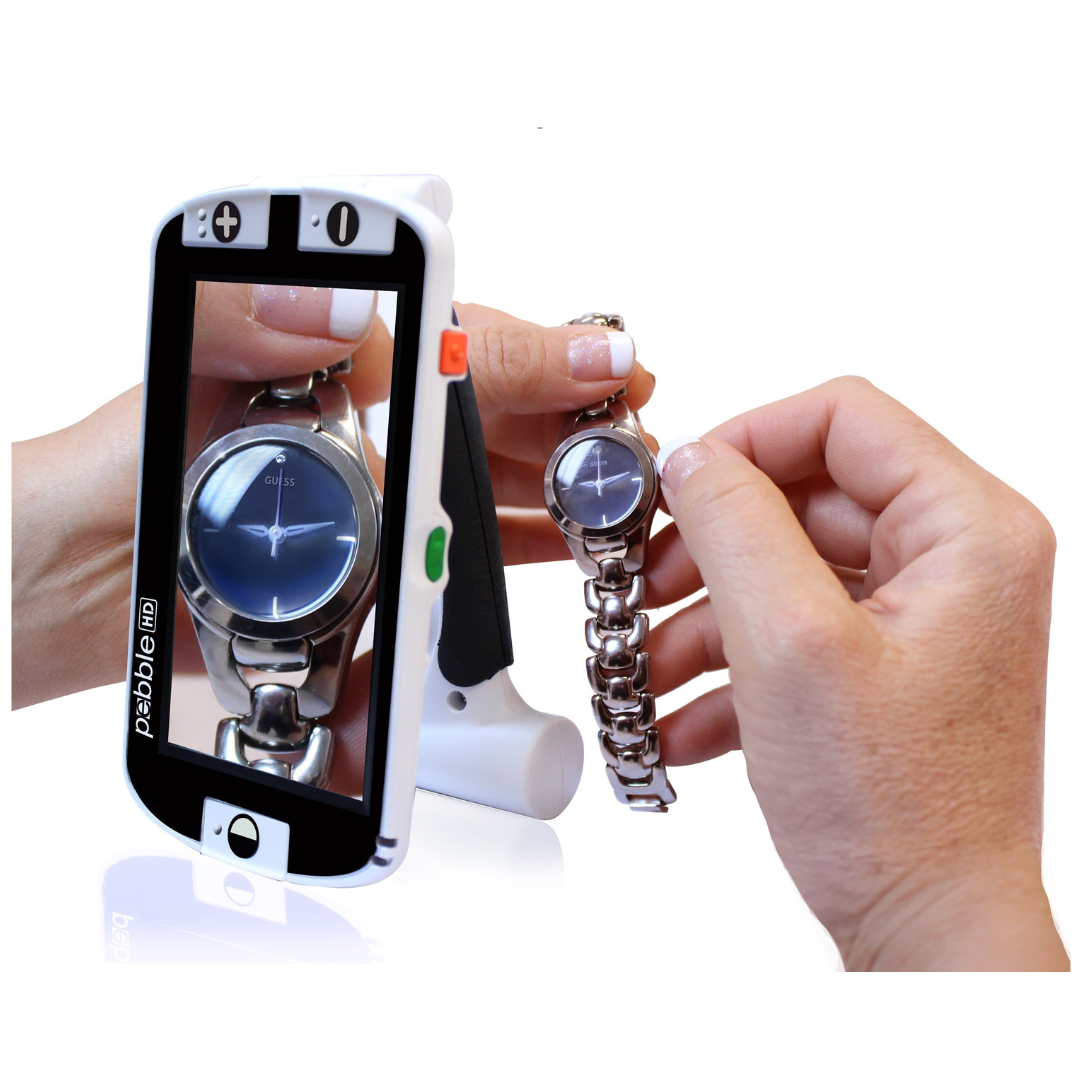Enhanced Vision Pebble HD Lightweight Portable Video Magnifier - 4.3" Viewing Screen
Enhanced Vision Pebble HD Lightweight Portable Video Magnifier - 4.3" Viewing Screen
Share
SKU:PSCH1E43A
Out of stock
Couldn't load pickup availability
We accept














Pebble HD takes everything users loved about the original Pebble, and made it even better with a new high definition camera and an innovative light-weight ergonomic design. The colorful 4.3” HD display provides uncompromised power and clarity, giving consumers a vibrant, bold image with fully adjustable magnification between 1.25x - 13.5x. Weighing less than 8 ounces, and thin enough to slide into a pocket, Pebble HD is the perfect companion. Pebble HD boasts a new HD camera providing a crisp, clear, colorful, high definition picture. A new ergonomic lightweight compact design makes it the perfect companion whether at home or on the go. Carry Pebble HD in your purse, pocket, or clip it on your belt with the included carrying case. The only time you'll know it's there is when you need it!
Features:
- FREE 2 Day Nationwide Delivery!
- All New HD camera with 4.3" LCD
- 28 available color select modes
- Easy-to-use large tactile buttons with bump dots in two color choices
- Adjustable brightness with lights on/off feature
- Weighs only 7.2 ounces
- Adjustable magnification from 1.25x to 13.5x
- 2 year warranty
- Real time clock and calendar
- Audible feedback
- Carrying case included
- Multi-purpose handle allows usage in various positions
- Rechargeable battery with up to 3 hours of continuous use
- Freeze frame with image save capability and PC download
- Designed and Assembled in the USA
Specifications
- 4.3″ diagonal TFT display, 16-bit LCD Brightness: 500cd/m2 (at full brightness)
- Magnification: 4.5x, 5.5x, 7.9x, 9.5x, 13.5x (For Pebble HD 4.3″) with handle in the closed position
- Weight: 7.1 oz.
- Resolution: 480 x 272 (RGB)
- Viewing Angle: 60˚ Dimensions:
- 5.5″L x 3.1″W x 1.25″ H (with handle closed for Pebble HD 4.3″)
- 10.2″Lx 3.1″W x 1″H (with handle fully extended for Pebble HD 4.3″)


